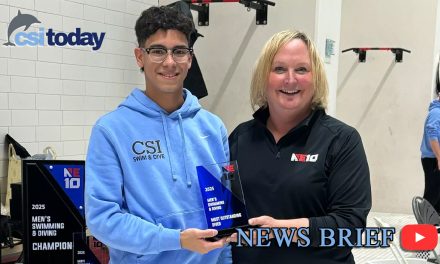
The CSI Astrophysical Observatory will give viewers the opportunity to see the Transit of Venus this June.
The Astrophysical Observatory at the College of Staten Island (CSI), home to one of the largest and most sophisticated public telescopes in New York, is holding viewing sessions this spring and invites the public to watch Earth’s planetary neighbors in motion as they travel across the sky.
“This spring we have the main planets in great positions to observe. Venus, Mars, Jupiter, and Saturn are beautiful objects to see in a telescope,” said Irving Robbins, Associate Professor of Engineering Science and Physics and Director of the Astrophysical Observatory, adding that the “views of the Moon and Saturn will knock your socks off.”
View the CSI Events Calendar for the entire spring observatory schedule and important event information. There are many celestial wonders that can be seen during the public viewing sessions hosted by CSI professors.
Perhaps one of the season’s most highly anticipated celestial event is the Transit of Venus, the last one in our lifetime, which will occur near sunset on Tuesday June 5, 2012. The Transit viewing “is by far the noblest astronomy affords,” according to Edmund Halley, the second Astronomer Royal in Britain, who is best known for computing the orbit of the eponymous Halley’s Comet.
“A Transit of Venus occurs when Venus passes directly between the sun and earth. This alignment is rare, coming in pairs that are eight years apart but separated by over a century” according to transitofvenus.org.
The last transit occurred in 2004. The next such alignment will not be visible again until the year 2117.
Although the public is easily able to safely view the event via methods such as through a pinhole projector, a solar filtered telescope, or through #14 welding glasses, Robbins advises people to view the Sun and the Transit of Venus in a safely controlled environment.
Robbins admits that the most interesting part of the Transit of Venus is not actually seeing Venus cross in front of the sun, but the ability to watch the sun with the aid of the Observatory’s state-of-the-art equipment. This year’s Transit just makes it that much more special.
“The coolest part is seeing the activity on the sun” as Venus crosses in front of it, according to Robbins. “We’ll see some sun spots, explosive events known as prominences, and if we are lucky even flares,” he added.
For updates on the Transit of Venus viewing at CSI, join our email list.
For more information visit the Astrophysical Observatory online.

















